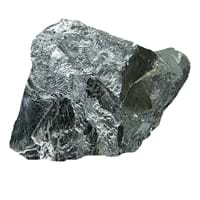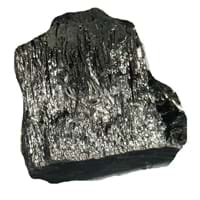Chromium Thulium Comparison
Periodic Table
Symbol
Cr
Tm
Group Number
6
12
Not Available
Period Number
4
6
Block
d block
f block
Element Family
Transition Metal
Lanthanide
CAS Number
7440473
39
7440304
99+
Space Group Name
Im_ 3m
P63/mmc
Space Group Number
229.00
1
194.00
5
Facts
Interesting Facts
- Chromium is highly reactive, hence it is not found free in nature.
- Ores of Chromites mineral are the major source of Chromium metal.
- Almost 90% leather tanning is done with the help of chromium.
- Thulium metal can resist corrosion due to dry air .
- Only Tm-169 isotope of Thulium metal occur naturally.
Sources
Found in Minerals, Mining, Ores of metals, Ores of Minerals
Found in Minerals, Mining, Ores of Minerals
History
Who Discovered
Louis Nicolas Vauquelin
Per Teodor Cleve
Discovery
In Between 1797 - 1798
In 1879
Abundance
Abundance In Universe
1.5 * 10-3 %
7
1 * 10-8 %
30
Abundance In Sun
~0.002 %
7
~0.00000002 %
28
Abundance In Meteorites
0.30 %
7
0.00 %
99+
Abundance In Earth's Crust
0.01 %
13
0.00 %
99+
Abundance In Oceans
0.00 %
16
0.00 %
99+
Abundance In Humans
0.00 %
16
Not Available
Uses
Uses & Benefits
- It is used to harden the steel and produces a stainless steel and other various alloys.
- It is also used to give proper finish to polished mirrors. Its chromium plates are used in bathroom fittings.
- Thulium metal produces isotopes that emits X-rays. This isotope is used in X-ray machine.
- Thulium element is also used in Surgical equipment like laser.
Industrial Uses
Automobile Industry, Chemical Industry
NA
Medical Uses
NA
NA
Other Uses
Alloys
Alloys, Nuclear Research, Research Purposes
Biological Properties
Toxicity
Highly Toxic
Unknown
Present in Human Body
Yes
No
In Blood
0.11 Blood/mg dm-3
12
Not Available
In Bone
0.33 p.p.m.
21
Not Available
Physical Properties
Melting Point
1,857.00 °C
14
1,545.00 °C
23
Boiling Point
2,672.00 °C
39
1,730.00 °C
99+
Appearance
Physical State
Solid
Solid
Color
Silver
Silvery Gray
Luster
Metallic
Metallic
Hardness
Mohs Hardness
8.50
1
Not Available
Brinell Hardness
687.00 MPa
16
471.00 MPa
25
Vickers Hardness
1,060.00 MPa
10
520.00 MPa
21
Speed of Sound
5,940.00 m/s
5
Not Available
Optical Properties
Allotropes
No
No
α Allotropes
Not Available
Not Available
β Allotropes
Not Available
Not Available
γ Allotropes
Not Available
Not Available
Chemical Properties
Chemical Formula
Cr
Tm
Isotopes
Known Isotopes
21
18
32
7
Electronegativity
Pauling Electronegativity
1.66
18
1.25
35
Sanderson Electronegativity
1.66
14
Not Available
Allred Rochow Electronegativity
1.56
10
1.11
29
Allen Electronegativity
1.65
19
Not Available
Electropositivity
Pauling Electropositivity
2.34
36
2.75
19
Ionization Energies
1st Energy Level
26,130.00 kJ/mol
1
596.70 kJ/mol
99+
2nd Energy Level
28,750.00 kJ/mol
1
1,160.00 kJ/mol
99+
3rd Energy Level
34,230.00 kJ/mol
1
2,285.00 kJ/mol
99+
4th Energy Level
37,066.00 kJ/mol
1
4,120.00 kJ/mol
33
5th Energy Level
97,510.00 kJ/mol
1
Not Available
6th Energy Level
105,800.00 kJ/mol
1
Not Available
7th Energy level
114,300.00 kJ/mol
1
Not Available
8th Energy Level
125,300.00 kJ/mol
1
Not Available
9th Energy Level
134,700.00 kJ/mol
1
Not Available
10th Energy Level
144,300.00 kJ/mol
1
Not Available
11th Energy Level
26,130.00 kJ/mol
12
Not Available
12th Energy Level
28,750.00 kJ/mol
13
Not Available
13th Energy Level
34,230.00 kJ/mol
10
Not Available
14th Energy Level
37,066.00 kJ/mol
12
Not Available
15th Energy Level
97,510.00 kJ/mol
1
Not Available
16th Energy Level
105,800.00 kJ/mol
2
Not Available
17th Energy Level
114,300.00 kJ/mol
3
Not Available
18th Energy Level
125,300.00 kJ/mol
4
Not Available
19th Energy Level
134,700.00 kJ/mol
5
Not Available
20th Energy Level
144,300.00 kJ/mol
7
Not Available
21st Energy Level
157,700.00 kJ/mol
7
Not Available
22nd Energy Level
166,090.00 kJ/mol
6
Not Available
Electrochemical Equivalent
0.32 g/amp-hr
99+
2.10 g/amp-hr
26
Electron Work Function
4.50 eV
14
Not Available
Other Chemical Properties
Anti Corrosion, Chemical Stability, Ionization, Radioactive Isotopes, Solubility
Ionization, Radioactive Isotopes, Solubility
Atomic Properties
Atomic Number
24
99+
69
99+
Electron Configuration
[Ar] 3d5 4s1
[Xe] 4f13 6s2
Crystal Structure
Body Centered Cubic (BCC)
Hexagonal Close Packed (HCP)
Crystal Lattice
BCC-Crystal-Structure-.jpg#100
HCP-Crystal-Structure-of-Thulium.jpg#100
Atom
Number of Protons
24
99+
69
99+
Number of Neutrons
28
99+
100
32
Number of Electrons
24
99+
69
99+
Radius of an Atom
Atomic Radius
128.00 pm
99+
176.00 pm
18
Covalent Radius
139.00 pm
99+
160.00 pm
30
Van der Waals Radius
200.00 pm
28
Not Available
Atomic Weight
52.00 amu
99+
168.93 amu
99+
Atomic Volume
7.23 cm3/mol
99+
18.10 cm3/mol
28
Adjacent Atomic Numbers
Valence Electron Potential
170.00 (-eV)
4
49.70 (-eV)
28
Lattice Constant
291.00 pm
99+
353.75 pm
40
Lattice Angles
π/2, π/2, π/2
π/2, π/2, 2 π/3
Lattice C/A Ratio
Not Available
1.57
17
Mechanical Properties
Density
Density At Room Temperature
7.19 g/cm3
99+
9.32 g/cm3
40
Density When Liquid (at m.p.)
6.30 g/cm3
40
8.56 g/cm3
24
Tensile Strength
689.00 MPa
7
Not Available
Viscosity
Not Available
Not Available
Vapor Pressure
Vapor Pressure at 1000 K
0.00 (Pa)
24
0.06 (Pa)
10
Vapor Pressure at 2000 K
774.00 (Pa)
1
Not Available
Elasticity properties
Shear Modulus
115.00 GPa
9
30.50 GPa
22
Bulk Modulus
160.00 GPa
11
44.50 GPa
26
Young's Modulus
279.00 GPa
8
74.00 GPa
27
Poisson Ratio
0.21
32
0.21
31
Other Mechanical Properties
NA
Ductile, Malleable
Magnetic Properties
Magnetic Characteristics
Specific Gravity
7.19
99+
9.32
31
Magnetic Ordering
Antiferromagnetic
Paramagnetic
Electrical Properties
Electrical Property
NA
Conductor
Resistivity
125.00 nΩ·m
27
676.00 nΩ·m
5
Electrical Conductivity
0.08 106/cm Ω
25
0.02 106/cm Ω
99+
Electron Affinity
64.30 kJ/mol
15
50.00 kJ/mol
21
Thermal Properties
Specific Heat
0.45 J/(kg K)
12
0.16 J/(kg K)
35
Molar Heat Capacity
23.35 J/mol·K
99+
27.03 J/mol·K
22
Thermal Conductivity
93.90 W/m·K
17
16.90 W/m·K
99+
Critical Temperature
Not Available
Not Available
Thermal Expansion
4.90 µm/(m·K)
99+
13.30 µm/(m·K)
29
Enthalpy
Enthalpy of Vaporization
348.80 kJ/mol
24
191.00 kJ/mol
99+
Enthalpy of Fusion
15.31 kJ/mol
20
16.80 kJ/mol
17
Enthalpy of Atomization
397.50 kJ/mol
21
247.00 kJ/mol
99+
Standard Molar Entropy
23.80 J/mol.K
99+
74.00 J/mol.K
9
|
||
|
||
|












